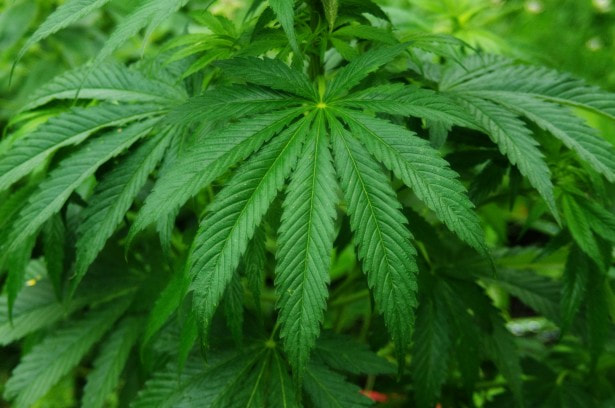
A 2017 Gallup poll indicated that 64% of Americans now support cannabis legalization, as many are turning to cannabis to safely and effectively treat symptoms related to neurological disorders, cancer, psychological disorders, gastrointestinal disease, infectious disease, and inflammatory disease. How can one plant help with so many conditions and have so few side effects?
To understand the answer, you must understand the endocannabinoid system.
All living organisms regulate their internal environment to maintain the relatively narrow range of conditions needed for proper cell function. For example, your body temperature needs to be kept relatively close to 98.6 degrees Fahrenheit. Your body’s pH must be kept within a very narrow range to survive and function. Your blood must approximate specific levels of systolic and diastolic pressures to remain healthy.
This maintenance of a stable internal environment, even in the face of an ever-changing external environment, is called homeostasis. All mammals have a physiologic system, called the endocannabinoid system (or ECS), and its job is to maintain this cellular homeostasis. Since its discovery in 1992, we’ve learned that the ECS regulates mood, appetite, sleep, pain, and memory. For example, a stimulation of the ECS can reduce inflammation, relax muscles, lower blood pressure, dilate bronchial passages, and normalize over-stimulated nerves.
Research suggests that many disease states arise from a deficiency in the ECS. This condition is called Clinical Endocannabinoid Deficiency (CED), and there is speculation that this deficiency may be the cause of fibromyalgia, migraines, irritable bowel syndrome, cancer, depression, anxiety, heart disease, stress, cystic fibrosis, phantom limb pain, post-traumatic stress disorder, and dysmenorrhea. Dr. Ethan Russo has suggested that all humans have a base level of endocannabinoids (neurotransmitters that our bodies naturally produce), and when this level is deficient, it manifests in diseases marked by chronic pain, dysfunctional immune systems, fatigue, and mood imbalances.
If your ECS is failing to function at its optimal level, can you address this deficiency with cannabis? The research clearly demonstrates that, because plant-based cannabinoids mimic the effect of our endocannabinoids, the cannabinoids found in cannabis can be palliative, preventative, and curative.
How can cannabis help you? Cannabis has demonstrated safety and efficacy when treating the following symptoms and conditions:
+ Insomnia and Sleep-Related Issues
You can use cannabis to help treat insomnia and other sleep-related conditions. Cannabis can be more effective and safer than many pharmaceutical sleep aids, which can cause harmful side effects, especially in seniors. Diphenhydramine and Zolpidem, for example, are not recommended for patients over the age of 65.
Small amounts of THC (average doses range from 2.5 mg to 10 mg) when smoked or vaporized can help you fall asleep. Myrcene, a compound commonly found in many cannabis strains, can also help you fall asleep.
Edibles and tinctures are also good options for treating sleep issues. The effects of orally and sublingually ingested cannabis last longer than the effects of smoked cannabis, and many patients use edibles to help stay asleep through the night. However, dosing is critical: 2.5 mg to 5 mg is commonly sufficient for an average quality of sleep.
+ Chronic Pain
When used to treat chronic pain, cannabis is not toxic like opioids and other non-narcotic pain medications. Unlike opioids, cannabis does not cause constipation (though it can exacerbate it), does not cause any physical dependence, and has fewer side effects. Also, there is no lethal dose of cannabis.
Cannabis works synergistically with opioids. Clinical studies have demonstrated that patients use fewer opioids when medicating with cannabis. The cannabis treatment recommended for chronic pain patients depends on the type of pain. An experienced healthcare professional can help you determine how best to use cannabis to treat pain.
+ Anxiety and Depression
Anxiety and depression are often a result of other underlying issues: pain, insomnia, other health issues, fear of aging and dying, or the loss of a spouse. Many of the medications prescribed for anxiety and depression are associated with severe side effects. These medications can be addicting and nearly impossible to wean from completely. Benzodiazepines, for example, are extremely difficult to stop using.
Cannabis has long been used to treat depression and anxiety—one of the first Western references was in 1621. Cannabis can help treat psychological disorders by enhancing mood, providing energy and focus, relieving anxiety, inducing hunger, and combating insomnia. Stress is one of the leading causes of depression, and moderate use of cannabis can alleviate stress and stabilize moods.
A 2006 study demonstrated that both occasional and daily cannabis users have lower levels of depressive symptoms than non-users. Another study at McGill University in Montreal demonstrated that THC in low doses produces serotonin and can act as an antidepressant.
+ Appetite and Weight Loss Issues
Appetite issues and weight loss are commonly a result of cancer, aging (because of changes to the taste buds), pain, or as a side effect of prescribed medications. Cannabis has demonstrated efficacy in increasing appetite when treating patients with HIV, cancer, or other diseases associated with muscle wasting (also known as cachexia). Cannabinoids can activate the CB1 receptor to affect appetite stimulation. This process may also be associated with the release of ghrelin (known as the “gut-brain hormone”), a peptide hormone that is secreted from the stomach and intestines to increase hunger. And, cannabis can be very effective for treating nausea and vomiting.
Regardless of the symptom or side effect that you want to treat, you should work with an experienced and knowledgeable healthcare professional who can help you create an individualized treatment plan. Generally, you should start with a low dose, then slowly and iteratively increase the dose until you reach efficacy. Starting with a low dose minimizes unwanted side effects and reduces the chances of building a tolerance to the effectiveness of your dose. A treatment plan should always include how much of a medicine to take, how frequently to take it, how long to take a specified dose, when and under what circumstances you should increase your dose, as well as the predicted length of therapy.
Also, a healthcare professional can help you determine which routes of administration might best affect your condition. For example, if you’re treating constant arthritic pain, you might need to apply a topical directly to the area, ingest cannabis to help treat the pain throughout the day, and inhale cannabis to treat breakthrough pain.
Even with this guidance, some experimentation is often necessary. You might need to further individualize your treatment plan to fit your lifestyle by experimenting with different cannabinoids, dosages, and frequencies. And, of course (as with any therapeutic substance) cannabis can produce side-effects. Typically, adverse effects are dose-dependent and are much better tolerated than those associated with corresponding prescription medications. Despite these concerns, many patients find relief with cannabis—it can be a safe and effective choice for treating age-related and chronic illness, and for possibly reducing your intake of pharmaceuticals that have severe side effects. Patience and persistence often pay off.
About the Author: Timothy Byars
Timothy Byars, CEO, Radicle Health and Eloise Theisen, RN, MSN, AGPCNP-BC CVO, Radicle Health Disclaimer: The views expressed in this article are those of the authors and do not necessarily reflect those of Bay Area Cancer Connections. This article was selected for publication in response to requests from our clients, who have asked for information on cannabis. It is not considered comprehensive and is intended for informational purposes only. For additional information on cannabis, please explore the links listed below or contact our Medical Information Service. This information does not substitute for
medical care, and should not be used for the purposes of diagnosis or treatment. As each medical condition is unique, we strongly advise you to consult your physician with questions about your own situation, or about any of the information provided as it may relate to your specific case. If you are considering using cannabis, we encourage you to be informed and aware of the differences in state and federal laws regarding its use.

